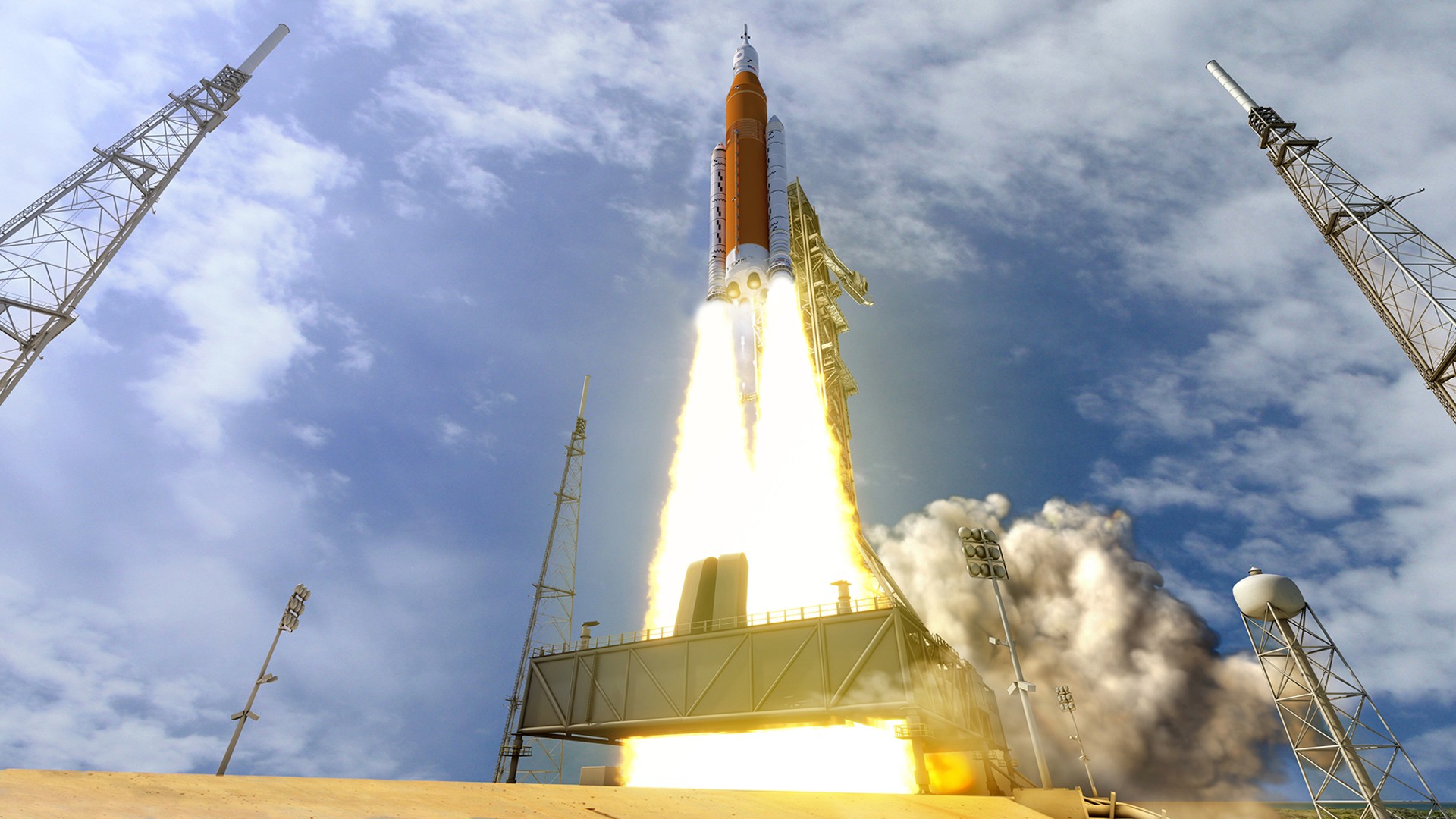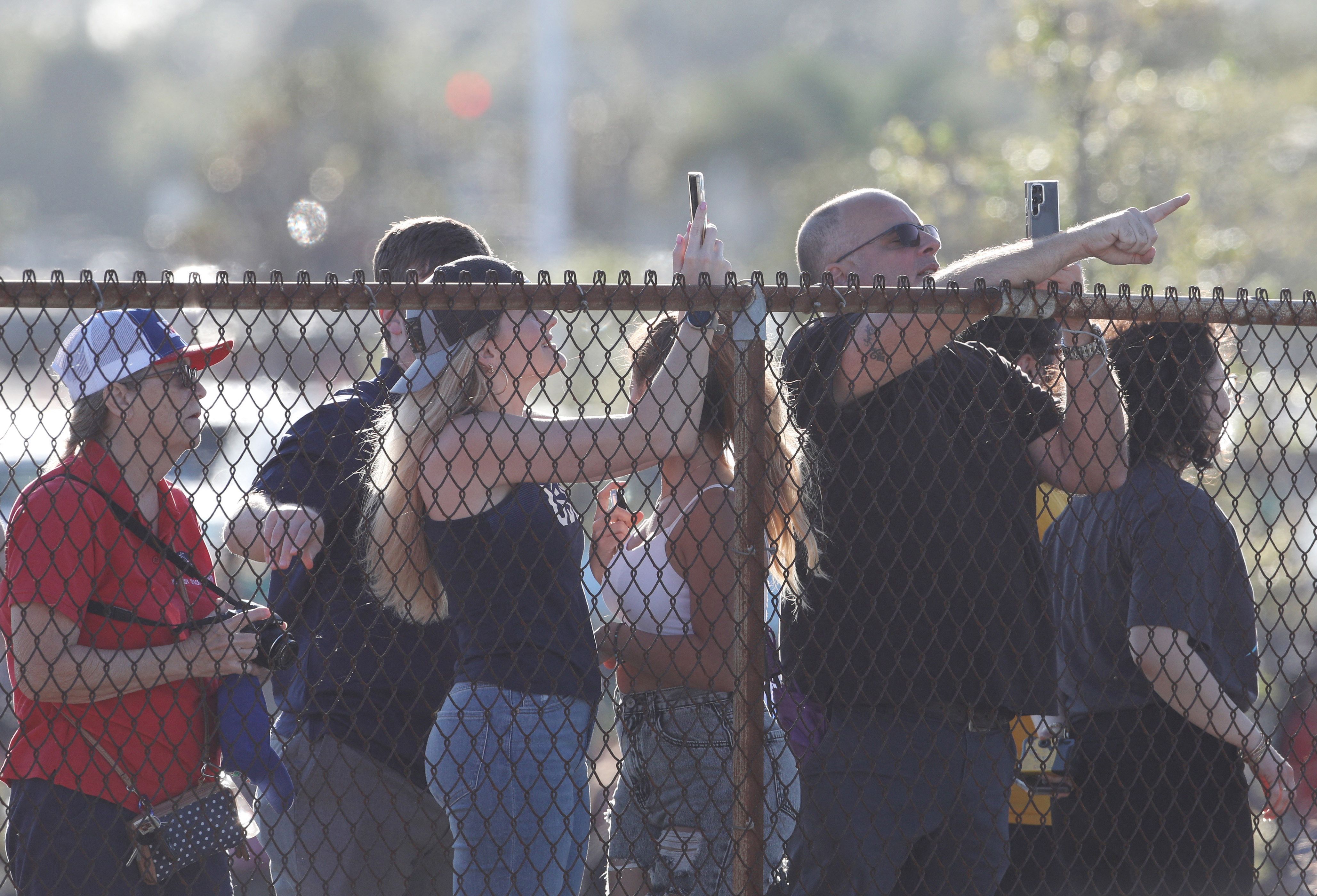Florida braces for crowds for NASA's Artemis 1 moon mission launch
The Space Coast expects over 100,000 tourists to arrive to watch the launch of Artemis 1.

They're coming.
Tourism officials in Florida's Space Coast are expecting a massive influx of tourists for the upcoming Artemis 1 moon mission, the first launch for NASA's Space Launch System rocket. The "Space Coast" is a term given to the region of Florida where both Kennedy Space Center (KSC) and Cape Canaveral Space Force Station are located.
"First-time launch viewers should start planning their Space Coast getaway now to be prepared. Many beachside hotels are already sold out for the Artemis launch attempts, but there are still rooms available on the mainland," Peter Cranis, executive director of Florida's Space Coast Office of Tourism, told Space.com. "There are plenty of viewing locations to choose from, and we recommend getting to your chosen spot early to find parking and have backup locations in mind. There will be a considerable amount of traffic before and after the launch, so visitors should make sure they have taken any pre-trip bathroom breaks, stocked the car with snacks or ways to entertain kids, and packed their patience."
Related: NASA's Artemis 1 moon mission explained in photos
Cranis added that Artemis 1 launch viewers should "Remember to wear sunscreen, download the SpaceCoastLaunches app, and keep an eye on NASA and the Space Coast Office of Tourism's official social media feeds for updates. If you post any images or video on social media, please use #SpaceCoast so we can see and possibly share."
Cranis said that while it's hard to tell first-time launch viewers what to expect, the storied history of space shuttle launches at the Cape could give us a hint of what the Artemis 1 launch will be like. "It's hard to say just what to expect as this is the maiden voyage for the SLS, but we have been told that it will look and feel similar to Shuttle launches due the tremendous power," he told Space.com. "This will include rumbling and windows vibrating quite a distance away. Although you can see a rocket launch through video or even from across the state on a clear day, nothing beats hearing and feeling the launch up close. The Space Coast is the only beach that doubles as a launch pad, and we're excited for this next chapter in human spaceflight and space exploration."
Related: Why are rockets launched from Florida?
Breaking space news, the latest updates on rocket launches, skywatching events and more!

Florida Today reports that officials expect over 100,000 tourists to flock to Florida when the space agency plans to launch the massive 200-foot (61-meter) rocket on Aug. 29 (or on placeholder backup dates of Sept. 3 and Sept. 5). Artemis 1 will launch from Launch Pad 39B at KSC on an uncrewed test flight that will place the Orion spacecraft in orbit around the moon for six to 19 days before returning to Earth. The mission will serve as a keystone test for NASA's future crewed Artemis missions.
"We are expecting capacity crowds at Kennedy Space Center Visitor Complex for the upcoming Artemis launch," said Therrin Protze, the visitor complex's chief operating officer, according to Florida Today. Protze added that KSC will offer "special Artemis launch viewing packages that will include some of the closest public viewing opportunities with distinctive experiences like live commentary from space experts and access to select exhibits and attractions."
Cranis said that other missions, such as recent SpaceX Crew Dragon launches, have drawn equally large numbers of visitors, with some crowds as high as 250,000. Luckily, the surrounding county has more than 10,000 hotel rooms and 4,500 vacation rentals, but there will also be plenty of other visitors who drive in for the launch without needing to book accommodations.

It's not just launch watchers who are excited about the upcoming Artemis 1 mission. Mike Bolger, director of KSC's Exploration Ground Systems, told Florida Today that even KSC staff are buzzing with anticipation for the launch. "The growing sense of energy and excitement that has been steadily building around Kennedy and among our workforce in the last year is tangible," Bolger said. "A sense of anticipation is growing daily as we close in on launching this amazing rocket and spacecraft."
KSC Director Janet Petro said that the entire center is counting down to launch day. "You can see it in peoples' faces, you can hear it in their voices, and when we all stand together with our eyes to the sky on launch day, I don't think there will be a feeling in the world like it."
Follow Brett on Twitter at @bretttingley. Follow us on Twitter @Spacedotcom or on Facebook.

Brett is curious about emerging aerospace technologies, alternative launch concepts, military space developments and uncrewed aircraft systems. Brett's work has appeared on Scientific American, The War Zone, Popular Science, the History Channel, Science Discovery and more. Brett has English degrees from Clemson University and the University of North Carolina at Charlotte. In his free time, Brett enjoys skywatching throughout the dark skies of the Appalachian mountains.
